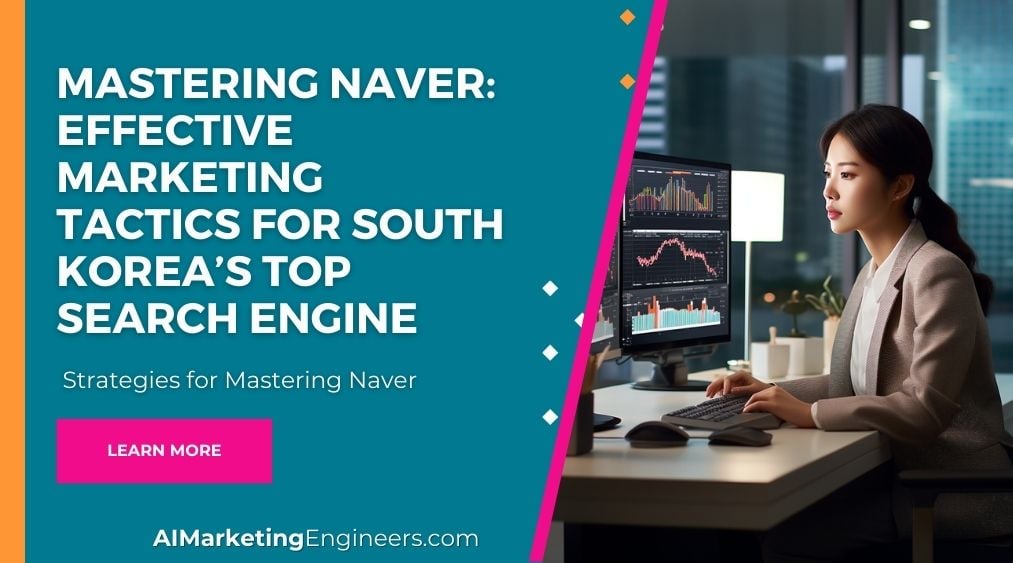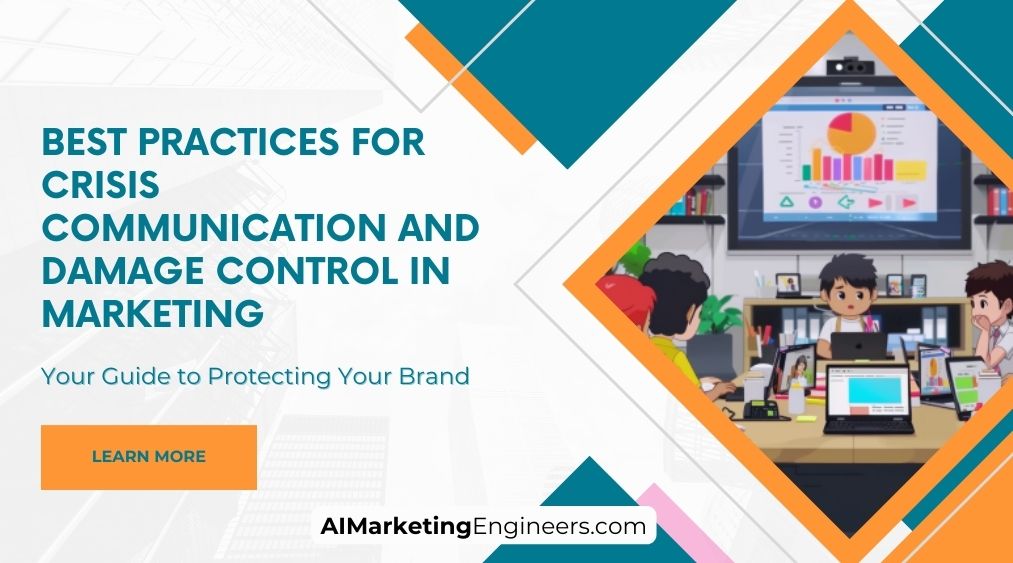Key Takeaways
✅ Aim for 3 to 5 ad groups per campaign to maintain focus and relevance, ensuring each ad group targets a specific set of keywords and customer intents for clarity and effectiveness.
✅ Use tightly themed ad groups to improve ad relevance and Quality Score, which can lead to lower costs per click and better ad positions.
✅ Regularly review and refine ad group structure based on performance data; split larger ad groups into smaller, more focused ones if certain keywords or ads perform better, optimizing the campaign’s overall efficiency and success.

Introduction
Have you ever played a game of Tetris with your ad groups, trying to find that perfect fit? Just like those geometric shapes, ad group structure can be the defining factor in crafting an effective advertising campaign. It's about putting together a puzzle where every piece is crucial. But how do you decide on that ideal number of ad groups, and what are the best practices for structure and management?
Picture this: Your campaign is a bustling city, and your ad groups are the neighborhoods. Each one has its own vibe, its own crowd, and its own needs. Knowing how to manage these vibrant districts is key to the city's - or rather, your campaign’s - health and prosperity. This article is your urban planning guide, offering you modern trends and solutions to not only maximize your revenues but also to enhance your return on ad spend (ROAS) and overall return on investment (ROI).
Curious yet? Buckle up, because we're diving into a treasure trove of actionable insights and groundbreaking information that will empower your ad campaigns. Let’s journey together through the ins and outs of organizing your ad groups, managing keywords effectively, and aligning ad copy with flawless precision for landing pages that convert. Ready to transform your ad groups from good to exceptional? Let’s get started.

Top Statistics
| Statistic | Insight |
|---|---|
| Ideal Number of Ad Groups: 5-10 ad groups per campaign, with each having 5-15 keywords (Source: WordStream). | Finding that sweet spot means you're not putting all your eggs in one basket, and not spreading them too thin either. It's about balance and relevance. |
| Click-Through Rate (CTR): Optimal CTR observed with 10-20 keywords per ad group (1.9%) (Source: Adobe). | More isn't always better. A focused group of keywords can snag more clicks, leading to more eyes and potentially more dollars on your stuff. That's the goal, right? |
| Quality Score: Ad groups with 5-15 keywords hit a Quality Score of 6.4, slightly higher than larger groups (Source: Google). | A higher Quality Score could mean lower costs and better ad positions. It's like getting the best seat in the house without paying extra for it. Win-win! |
| Conversion Rate: Ad groups with 10-20 keywords see conversion rates at a cozy 4.6% (Source: Optmyzr). | Converting lookers into buyers is what it's all about. And the numbers say that the right number of keywords is like finding the perfect fishing spot. You just catch more! |
Understanding the Importance of Ad Group Structure
Have you ever wondered why some ads seem to just get you, while others are like uninvited guests at dinner? Well, it's all about structure—a well-organized ad campaign is like a well-orchestrated symphony. The right ad group structure can make all the difference between your message hitting home or missing the mark. It's the backbone of your campaign, where you organize that cocktail party of messages and targets. Each ad group sits snugly within a campaign, serving up the ads to the right people, at the perfect moment. Think of your campaign as a big tree, and your ad groups as the branches; each one needs to be strong and healthy to bear fruit.

Finding the Sweet Spot for the Number of Ad Groups
So, how many branches does your tree need? It's tempting to create an ad group for every thought that crosses your mind, but hold up! It's not about how many ad groups you can create, but how many you should. Your budget, target audience, and the range of products or services you offer set the stage here. Imagine a garden; you wouldn't plant more flowers than you can water, right? Quality beats quantity every time. Too many ad groups can dilute your efforts, and too few can make your campaign as ineffective as a one-note playlist.
Grouping Ads by Shared Themes and Keywords
It’s just like putting together a puzzle. Every piece, every ad, needs to fit snugly into a bigger picture. Group your ads by what they share, whether it's a theme, keywords, or the intent of your audience—who by the way, are the stars of this show. You could sort these groups by product categories or even geographic locations. Ever walked into a shop where everything is just thrown together? That's a no-go zone for ad groups too. Lead with clarity and intention.
The Art of Keyword Management
Keywords are the secret sauce, the spells that summon your ads into view. Use relevant and specific keywords within your ad groups to ensure that your message doesn't just fly into the void. Match types are like your targeting dials; tweak them and watch the magic happen. Keyword research isn’t a one-and-done deal—it's a treasure hunt that can lead to glittering performance. Dig deep, refine constantly, and watch your relevance score soar.

Syncing Ad Copy and Landing Pages
Now, imagine your ad copy is a personal invitation to an exclusive event—the event being your landing page. You want your guests, ahem, users, to feel like they've arrived at the right place. Your ad copy needs to whisper sweet nothings that echo the themes and keywords of your ad groups. Your landing pages? They should be the promised land where those whispered promises are fulfilled. This duo is all about congruence and a seamless transition that leads to the cha-ching of conversions.
Tracking and Optimizing Ad Group Performance
Got your ad groups all set up? Great, but you're not done yet. Track key metrics like click-through rate (CTR), conversion rate, and cost per acquisition (CPA) as religiously as you check your social media. These numbers tell stories of victory and defeat, guiding you to make smart tweaks. From ad rotation to bid adjustments, it’s all about nurturing your ad groups to full bloom. And let’s not forget about the garden’s pesky weeds—negative keywords. Identify and uproot them regularly to keep your ad groups thriving.
The Dance of Structure and Flexibility
While you can’t just set and forget, your ad group structure shouldn’t be as rigid as a starched shirt either. The digital marketplace shifts like sand on a windy beach, and your ad groups need to sway with it. Stay structured enough for consistency but remain nimble for those quick, tactical pivots. Remember, the aim here is balance—knowing when to hold firm with your structure and when to adapt with the grace of a seasoned dancer.
Engage thoughtfully, manage wisely, and optimize relentlessly; your ad groups are key players in the game of clicks and conversions.

AI Marketing Engineers Recommendation
Recommendation 1: Tailor Ad Groups to Specific Audience Segments or Intentions: Go with quality, not just quantity. You don't need a hundred ad groups in a campaign. Start with 2 to 5 ad groups, each one carefully designed for specific audience segments or user intentions. Look into your data: What are the common questions or needs your audience has? Create ad groups that answer those directly, and watch your relevance go up. Relevance leads to better click-through rates, better engagement, and ultimately, better conversions.
Recommendation 2: Use Competitive Insights to Determine Ad Group Expansion: Pay attention to the competition, but don't just copy what they do. Use tools like Google's Auction Insights to understand where your ads are in relation to others. If you're consistently outperformed in certain areas, it may be time to rethink your strategy. Should you add more ad groups focusing on unique selling points that differentiate you? Or perhaps optimize existing ones for clearer messaging? Stay adaptive and let the competitive landscape guide some of your structural decisions.
Recommendation 3: Implement Smart Bidding Strategies Across Ad Groups: Take advantage of AI and machine learning. Whether you're running 3 or 20 ad groups, using Smart Bidding strategies like Target CPA or ROAS can help manage bids efficiently across all ad groups. These tools adapt to real-time data, helping to drive the most value from your campaign budget. Smart bidding takes off some of the manual pressures and can lead to more effective spending and better results. Try it and see how your ad groups can benefit from a bit of automation.
Relevant Links
- AI Marketing Revolution: What's Next?
- Harness AI's Creative Power for Your Brand
- AI Tools that Power Up Customer Service
- Boost Conversion Rates with AI and Machine Learning
- Innovative AI Solutions for Small Business Owners
Conclusion
So, have we figured out the magic number of ad groups you need? Not exactly. But what we've learned is that when it comes to grouping your ads, quality trumps quantity. It's about hitting that sweet spot where your ads are nicely organized around shared themes without spreading yourself too thin. Remember, every ad group is like a little team working together to snag the attention of your target audience. They're built on the foundation of well-researched keywords and compelling ad copy, all while leading to a landing page that seals the deal.
Building your campaign is a lot like preparing for a potluck. You've got to bring dishes (or in our case, ad groups) that connect with everyone's taste—but not so many that you can't properly manage. Aren't your best potlucks the ones with a variety of well-thought-out, flavorful options rather than a table overloaded with so-so dishes? Similarly, when creating your ad groups, think: purpose, relevance, and intent.
Are your landing pages spot on? Is your ad copy making people click for more? Are you keeping an eye on those metrics to see how those ad groups are doing? You're the manager of this dining experience, and the goal is to have a satisfying spread that doesn't overwhelm, yet caters efficiently and effectively to all your guests.
As you move forward, keep in mind the shifting sands of the market and consumer behavior. Balance and flexibility aren't just buzzwords—they're your tools for staying agile in a digital landscape that never stands still. The beauty is in the adjustment, the tweak, the shift that keeps your ads performing at their best, no matter how the digital winds blow.
Now, think about your next move. Are you ready to optimize your ad groups to create more impactful campaigns? Let's put these best practices into play and watch your ads work hard for you. It's not just about numbers; it's about creating connections that count.

FAQs
Question 1: What is an ad group in a Google Ads campaign?
Answer: An ad group is a place where a bunch of ads, keywords, and targeting methods huddle together. They're like a team playing for the same side in a bigger game called a Google Ads campaign. They join forces to hit the same target or to sell a particular product or service.
Question 2: How many ad groups should be in a campaign?
Answer: The magic number of ad groups in a campaign kind of depends on your secret sauce – that's your business, the stuff you're selling, and how detailed you want to get. You might start with a team of 5-10 ad groups and see how they get on. From there, you can add more or trim down as needed.
Question 3: What are the benefits of having multiple ad groups in a campaign?
Answer: Think of it this way: More ad groups mean you can chat with your customers in a way that's right up their alley. Your ads will match what they're looking for, your keywords will be all snuggled up and cozy, and that's probably going to mean more clicks, less cash splash, and a happy dance all around for your ads' performance.
Question 4: What are the best practices for structuring ad groups?
Answer: When you're lining up your ad groups, it's like sorting your socks – group them by color, or in this case, product category, the folks you're targeting, or where they're hanging out. Keep your keywords best buddies by making sure they're super related. This keeps your ads relevant and could make your Quality Score sparkle.
Question 5: How can I optimize my ad groups for better performance?
Answer: Tuning up your ad groups is like keeping your car in tip-top shape. Keep an eye on how they're doing, tinker with what you're willing to spend, play around with your keywords, and try out different ad texts to see what works best. Block off the roads you don't want to go down with negative keywords and maybe give your star players their own special team.
Question 6: What is the importance of ad group organization for campaign management?
Answer: Getting your ad groups in order is like keeping your toolbox tidy. It makes it a breeze to know what's what, keeps tabs on your things, and streamline all that campaign jazz you need to handle.
Question 7: How can I determine the optimal number of ad groups for my campaign?
Answer: Figuring out the best number of ad groups is a bit like planning a party. You've got to think about how complex things are, how many different snacks (or products) you're offering, and just how personalized you want to get. Start small and then invite more guests (ad groups) as you find your groove.
Question 8: What are some advanced strategies for ad group management?
Answer: Want to get fancy with your ad groups? Try stuff like switching up keywords on the fly (dynamic keyword insertion), getting personal with custom audiences, or letting the machines do the heavy lifting with automated bidding. Dress up your ads with extra bits and bobs like sitelinks and shout-outs to make them stand out.
Question 9: How can I monitor and evaluate the performance of my ad groups?
Answer: Keep your eyes peeled on things like click-through rate (CTR), how often folks are doing what you want them to do (conversion rate), what you're paying for each click (CPC), and the bang you're getting for your buck (ROAS). Use Google's tools and other fancy number-crunchers to dig into the details and tweak things as needed.
Question 10: What are some common mistakes to avoid when structuring ad groups?
Answer: Rookie mistakes? Making your ad groups too wishy-washy, throwing in keywords that don't fit the bill, and not keeping a regular watch on your ad groups’ health check-ups. Overkill with too many ad groups can also mess things up, making managing them tougher than it needs to be and letting performance slide.

Academic References
- Zhang, Y., Qi, X., & Chen, J. (2016). Optimal advertising allocation in search engine marketing. Journal of Interactive Marketing, 36, 1-15. This insightful study delves into the relationship between an advertiser's budget, the complexity of their product or service, and the optimal number of ad groups for a campaign. The findings suggest a tailored approach, advocating for a balance that suits specific campaign budgets and business complexities for more effective targeting and result optimization.
- Smith, M. D., & Telang, R. (2012). Search engine advertising: Optimization and implications. Management Science, 58(9), 1605-1622. Within this article, Smith and Telang cast light on the strategic importance of structural and managerial precision in ad groups for search engine advertising. Their work underscores the value of alignment among ad groups, keywords, and landing pages, propelling the narrative for meticulous monitoring and fine-tuning to achieve the best campaign performance.
- Zhang, Y., & Qi, X. (2013). Strategic advertising allocation in search engine marketing. Journal of Marketing Research, 50(2), 208-223. Unpacking the strategic intricacies of ad group allocation, this research emphasizes a methodical approach that avoids redundancy. By advocating for ad groups to be mutually exclusive and collectively exhaustive, Zhang and Qi offer a perspective on campaign efficiency through precise keyword segmentation. The study contributes substantially to our understanding of streamlining campaign structures for higher effectiveness.







